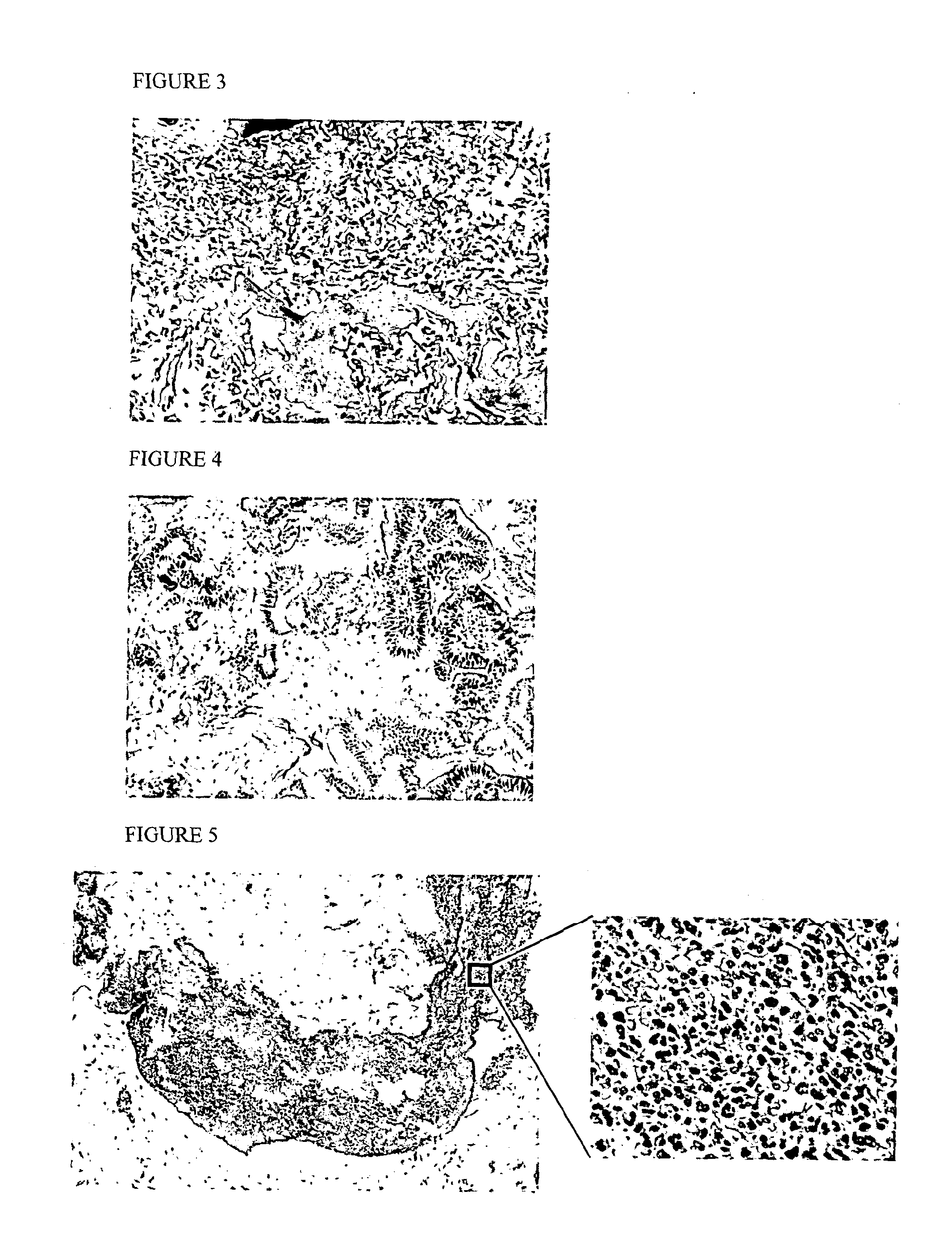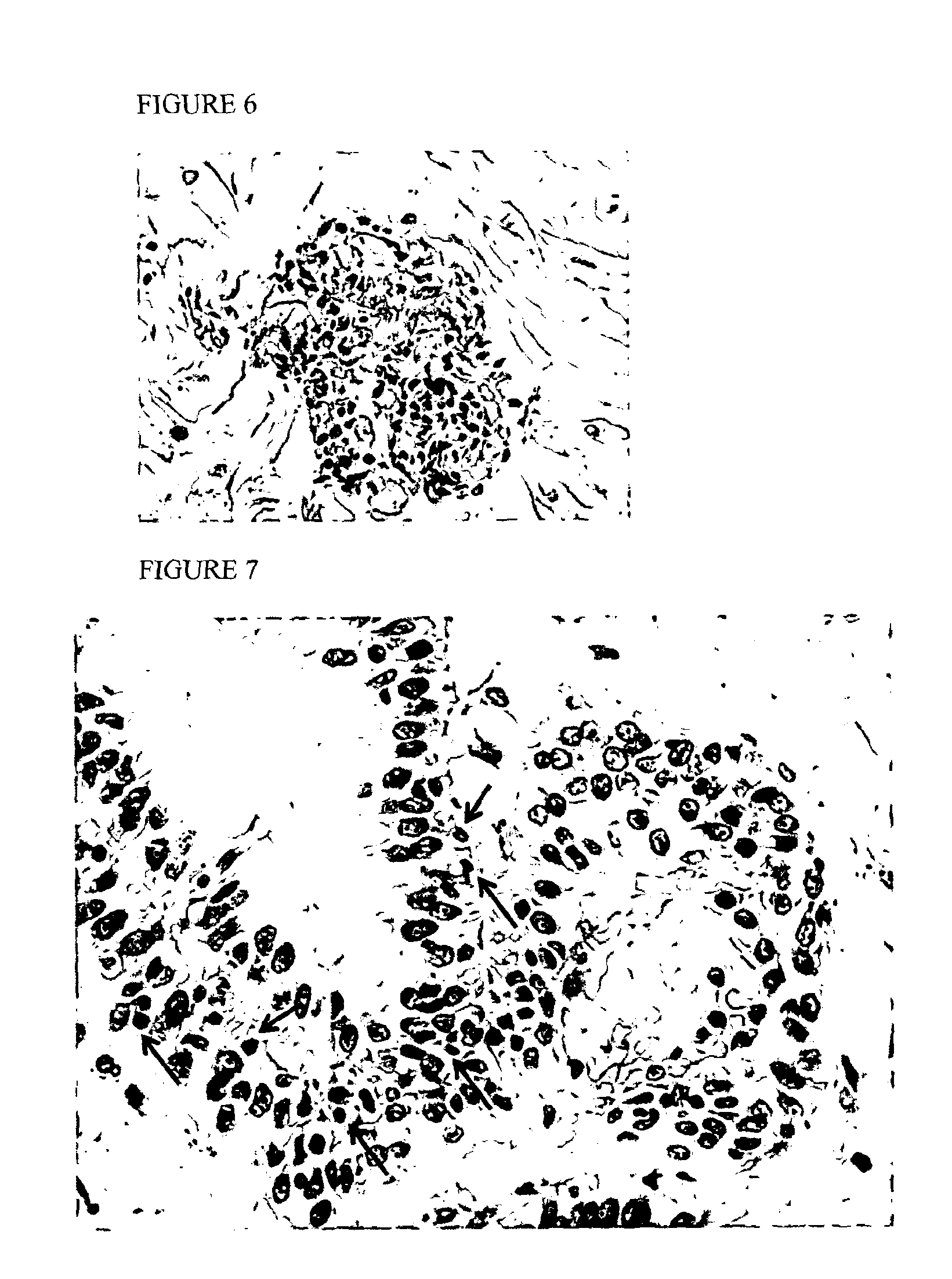Methods for detecting of benign conditions
a benign and bowel technology, applied in the field of detection of benign conditions of the upper intestinal tract, can solve the problems of false negative, invasive endoscopy, patient needing to attend a specialist centre and take time off work,
- Summary
- Abstract
- Description
- Claims
- Application Information
AI Technical Summary
Benefits of technology
Problems solved by technology
Method used
Image
Examples
example 1
[0244]We demonstrate:
1) determination whether inflammatory cells including eosinophils, Candida and H. plori could be detected on the Cytosponge sample;
2) use of data from the BEST1 cohort study of over 500 individuals to obtain preliminary data on the diagnostic yield for these conditions using the Cytosponge compared to endoscopy.
Study Design
[0245]A prospective cohort study of the Cytosponge was undertaken in 12 UK general practices. Endoscopy was used as the gold standard diagnostic test for comparison and the primary purpose was to determine our ability to diagnose Barrett's oesophagus as previously described (BMJ 2010). The study was approved by Cambridge Regional Ethics Committee. Eligible patients were identified by searching the prescribing database of 12 primary care practices for individuals aged 50 to 70 years with a previous prescription for an acid-suppressant medication (H2 receptor antagonist or proton pump inhibitor) for more than three months over the past five year...
example 2
Pathological Diagnosis
[0257]We demonstrate a method for aiding the diagnosis of an inflammatory condition of the upper intestinal tract in a subject, said method comprising detecting a foreign cell according to example 1.
[0258]Detection of foreign cell(s) in step (e) was used to infer that the subject has an inflammatory condition of the upper intestinal tract.
[0259]In addition, the foreign cells detected were classified and this was used to infer the type of disorder based on the type(s) of cell(s) observed.
[0260]More specifically,
if the foreign cell is a leukocyte, it is inferred that the subject has oesophagitis;
if the foreign cell is a neutrophil, it is inferred that the subject has oesophagitis;
if the foreign cell is a eosinophil, it is inferred that the subject has eosinophilic oesophagitis; if the foreign cell is H. plori, it is inferred that the subject has H. pytori infection; and if the foreign cell is C. albicans, it is inferred that the subject has C. albicans infection....
example 3
Further Diagnosis of Benign Conditions
[0270]Samples comprised cells collected on a Cytosponge.
[0271]To add to the data set already presented in the above examples, Cytosponge samples collected from an independent set of patients were analysed. Samples from patients recruited to the BEST2 study (n=625) were reviewed by an expert histo-cytopathologist (Dr Maria O'Donovan). Patients with Barrett's oesophagus or dyspepsia / reflux symptoms were recruited to the BEST2 study in 4 hospitals (Cambridge, Nottingham, University College London Hospital and Newcastle).
Infectious Diseases
[0272]As described herein, Candida (n=21) and Candida spores (n=14) could be identified in the Cytosponge samples. A total of 35 samples (5.67%) of the population were infected with either Candida or Candida spores.
[0273]Presence of Helicobacter pylori was examined in 432 patients from the cohort (according to whether it was clinically indicated at endoscopy to perform the gold standard do test) and a total of 10 ...
PUM
| Property | Measurement | Unit |
|---|---|---|
| width | aaaaa | aaaaa |
| diameter | aaaaa | aaaaa |
| abrasive | aaaaa | aaaaa |
Abstract
Description
Claims
Application Information
 Login to View More
Login to View More - Generate Ideas
- Intellectual Property
- Life Sciences
- Materials
- Tech Scout
- Unparalleled Data Quality
- Higher Quality Content
- 60% Fewer Hallucinations
Browse by: Latest US Patents, China's latest patents, Technical Efficacy Thesaurus, Application Domain, Technology Topic, Popular Technical Reports.
© 2025 PatSnap. All rights reserved.Legal|Privacy policy|Modern Slavery Act Transparency Statement|Sitemap|About US| Contact US: help@patsnap.com



